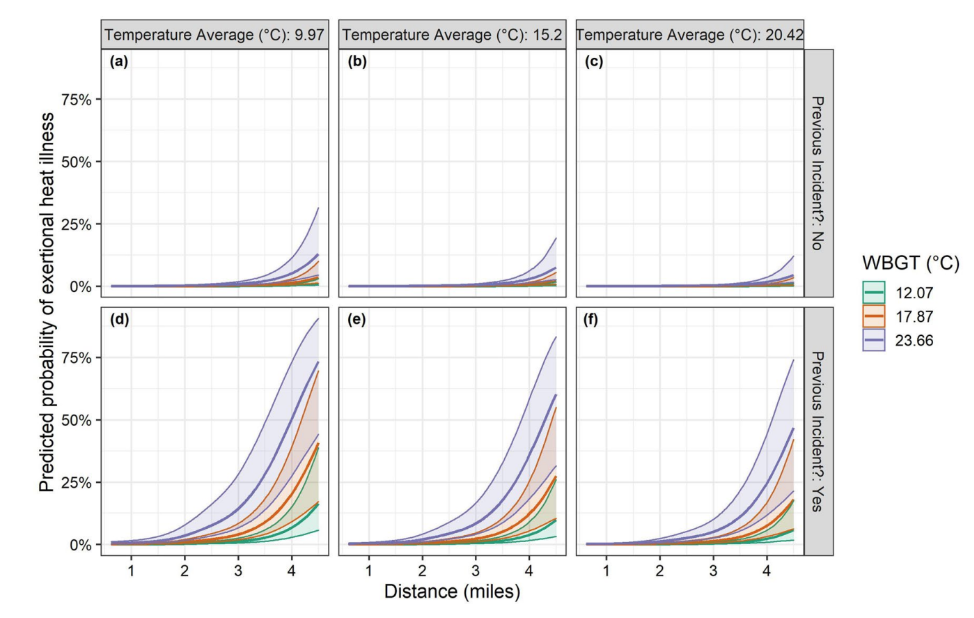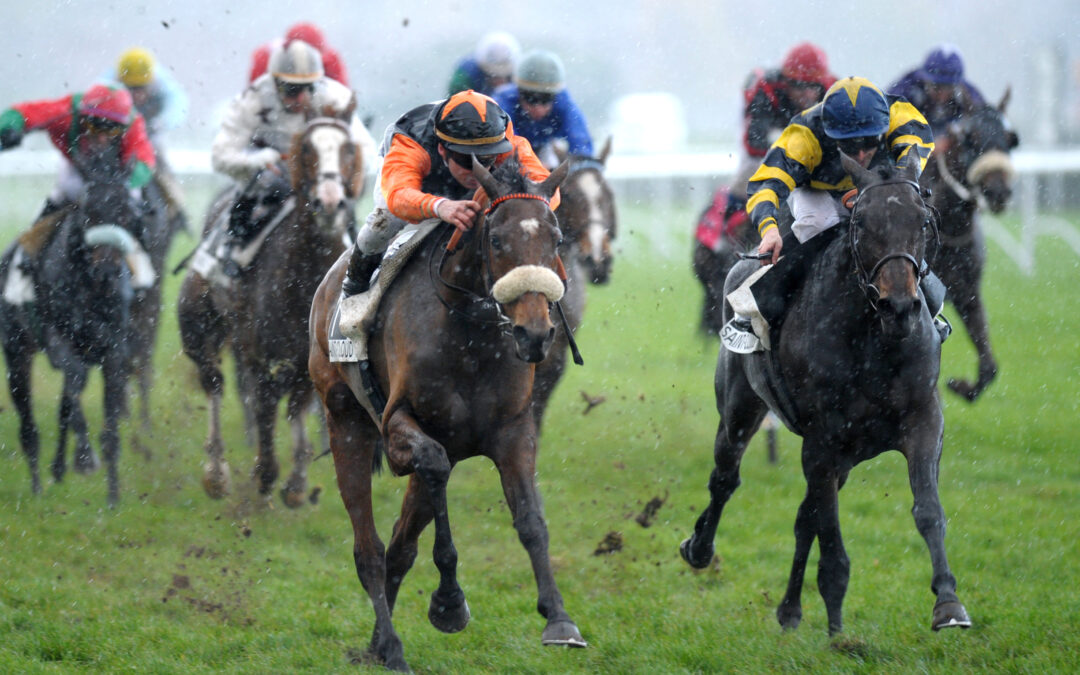Weather conditions play a significant role in racehorse performance. From temperature and humidity to wind speed and direction, precipitation and atmospheric pressure, each factor can affect a horse’s performance on the racetrack.
How do these climatic conditions impact horses? Is it possible to adapt the training and preparation of horses accordingly?
Temperature, rain and humidity… what impact do they have on the performance of racehorses?
Temperature
Temperature can play a crucial role in the performance of racehorses. In hot weather, horses can easily tire, which can reduce their ability to maintain a sustained effort. Horses generate a lot of heat when they run, and when exposed to high temperatures, their bodies can struggle to dissipate the heat, which can lead to reduced performance. Excessive heat in horses can cause an increase in heart rate, reduced appetite, lethargy, and excessive perspiration.
When it’s cold, horses’ muscles might contract and stiffen, decreasing their flexibility and mobility. When racing, this might result in decreased speed and power. Cold weather can also make horses more susceptible to injuries such as sprains and muscle strains.

Theoretical probability of exertional discomfort as a function of race distance for three values of wet global temperature (WBGT) (C) and average temperatures over the previous five days (C) for horses with no previous incident (a-c) and for those with one (d-f). Model variables not shown are held at their mean values.
Precipitation
Precipitation, whether rain, snow or hail, can also have an impact on racehorse performance. Rain is one of the most common weather conditions that racehorses can encounter.
Track surfaces can become slippery and muddy, which can make racing more difficult and increase the risk of injury. In such situations, horses may struggle to keep their balance and create an effective stride. Rain can also make the track heavier, putting more strain on horses and causing earlier weariness and endurance loss. In addition, precipitation can affect the horses’ visibility, which can cause their heart rate to increase more quickly, making it more difficult for jockeys to make the right decisions during the race. Trainers must consider these elements when preparing their horses and adjust their racing approach accordingly.
To find out more, we recommend this article on the influence of the ground on a racehorse’s performance.
Wind speed and direction
Wind speed and direction may have a significant impact on racehorse performance. A strong wind can complicate the race by adding extra resistance as the horses go ahead, affecting their balance and ability to keep a steady path.
A headwind can slow horses down and make racing more difficult, while a tailwind can help them reach higher speeds. Horses can also be sensitive to the noise and movement created by the wind, which can distract them and disrupt their concentration during the race or increase their heart rate.
Humidity
High humidity can make it harder for horses to breathe, resulting in decreased stamina and speed. Furthermore, humidity can cause horses to sweat more, which can lead to electrolyte loss and dehydration if not properly managed.
To find out more, we recommend this article on the influence of air quality on performance.
Atmospheric pressure
In the same way as humidity, high atmospheric pressure can make it harder for horses to breathe, which can lead to a drop in their stamina and speed. On the other side, low air pressure can make horses more energetic and anxious, which can also influence their performance.
The impact of weather conditions on racehorse training and preparation
Weather conditions can also have an influence on racehorse training and preparation. For example, in hot weather, training plans may need to be adjusted to avoid the warmest hours of the day. Similarly, in cold weather, extra precautions may be required to keep horses warm and avoid muscular damage. It is therefore essential to take weather conditions into account when planning the training and preparation of horses in order to maximise their performance.
How can we improve racehorse performance in different weather conditions?
Faced with these different weather challenges, it is important to take steps to manage the conditions as best as possible and optimise the horses’ performance.
For example, when it’s hot, it’s important to ensure that horses stay well hydrated and to provide shaded areas to rest between races. Similarly, when it’s cold, it’s important to keep horses warm with blankets and make sure they are properly warmed up before the race.
You can also keep a close eye on the weather forecast and adjust your training and racing strategies accordingly. If extreme weather conditions are forecast, it may be necessary to alter the intensity and duration of training to avoid unnecessary risks to the horses.
How can data help to understand the impact of weather conditions?
There are many examples of racehorses performing remarkably well in specific weather conditions.
Some horses may perform better in certain weather conditions than others: some horses may have better stamina and grip on a muddy track, while others may cope better in the heat. Understanding how different horses react to different weather conditions can help trainers and owners develop specific strategies to maximise their performance.
Conclusion
Temperature, humidity, wind speed and direction, precipitation, and air pressure are all factors that might affect a horse’s performance on the track. It is possible to optimize horse performance in diverse weather circumstances by taking into consideration the particular demands of horses, changing training and racing plans, and taking precautions to reduce the risk of damage.
SOURCES
Trigg, L.E., Lyons, S. and Mullan, S. (2023). Risk factors for, and prediction of, exertional heat illness in Thoroughbred racehorses at British racecourses. 13(1). doi:https://doi.org/10.1038/s41598-023-27892-x.
NOMURA, M., SHIOSE, T., ISHIKAWA, Y., MIZOBE, F., SAKAI, S. and KUSANO, K. (2019). Prevalence of post-race exertional heat illness in Thoroughbred racehorses and climate conditions at racecourses in Japan. Journal of Equine Science, 30(2), pp.17–23. doi:https://doi.org/10.1294/jes.30.17.
Keywords: weather, temperature, heart rate, speed, forecast, etc.

